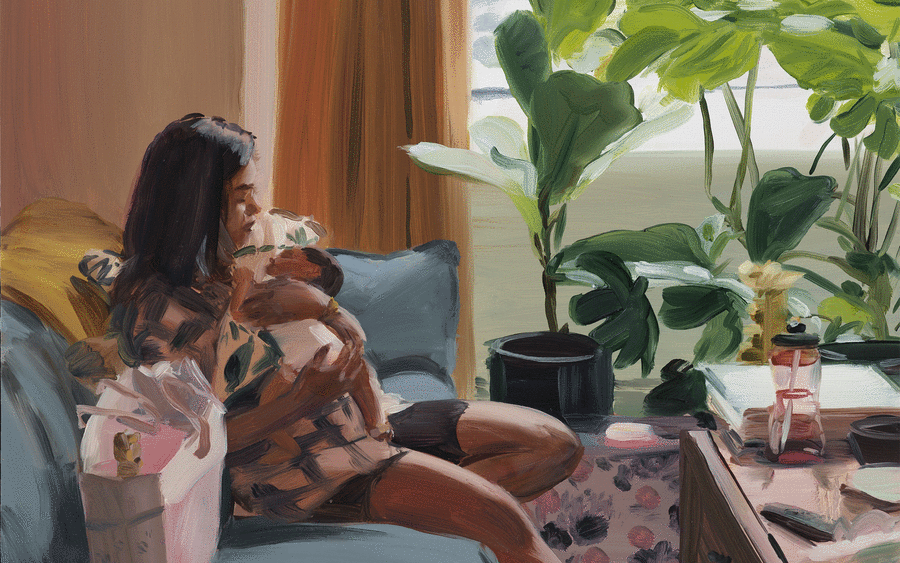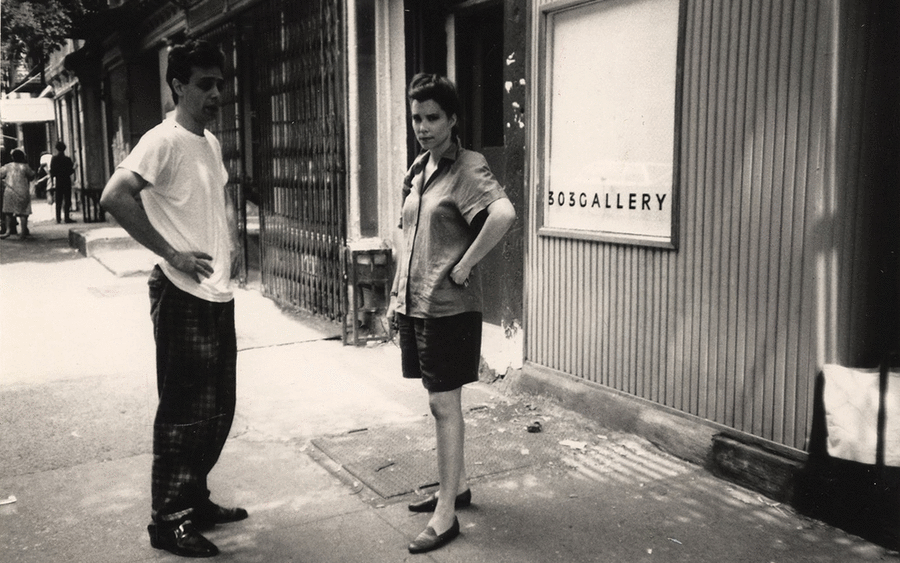The first time anything happens, we tend to call it progress. London’s Royal Academy recently made headlines when it staged the first solo show of work by a woman in its 255-year history, Marina Abramović. The Museo del Prado in Madrid — which took slightly less time, just under 200 years — staged its first solo show of work by a woman in 2016, Clara Peeters.
Or we might say these firsts are indictments of art world systems that have, for so long, arbitrated excellence, entry, and access at the exclusion of so many. While we can only applaud the enormous efforts made by museum staff and leaders to correct the thorny problems they have inherited, we can also ask: What is obscured by our rush to celebrate? Why did it take so long and how did the systems fail so badly? Are we now, in 2024, in alignment on our goals as an industry? Do we know what it takes to create lasting transformation?
Things appear to be changing slowly. There is an increasing sense of solidarity among many women working in the arts today. But there is also a new vulnerability being voiced. ‘People are afraid to say that they’re looking at their collection and totting up percentages,’ says Jessica Morgan, Director of Dia Art Foundation. ‘Culture can’t pretend to be working in isolation from what’s happening in the social and political realms. We’re witnessing a broad-scale backlash… and it is disproportionately taking down women.’
Morgan is not the only female professional interviewed for this article who says that the art world is not fully connected to the serious implications of this broader backlash, pointing to actions like the overturning of Roe vs. Wade in America, and what it means for women in the field. ‘There is more fearfulness about putting your neck out around these questions because, when things head south,’ Morgan says, ‘the forces are so strong they can quickly take people down.’
Equality is often presented as linear rather than cyclical, but consider that there was parity in graduation rates in art schools first in the 1940s, before rates fell backwards for several decades, only to reach parity again in the 1980s. Progress is hard-won and can be easily lost.
Women concerned with freedom have long found expression in their art: These are age-old issues. Female painters in late Imperial China sought to critique gender roles (and found some success doing so). Descendants of slavery in Gee’s Bend, Alabama, maintained cultural lineage through quilting traditions (and their work has recently received institutional recognition). Such artists have always existed, but the art world did not always acknowledge them. It is only through painstaking rediscovery that we now know about some of their work.
There is a ‘vicious cycle,’ says Camille Morineau of AWARE, a Paris-based organization that works collectively with experts to offer free biographical research into female artists and arranges events such as symposiums and conferences. The lack of information makes it difficult to acquire works or hold exhibitions, but it is ‘hard to hear about artists and conduct academic research when their works are hardly ever seen,’ Morineau says.
To fix things, museums and academics should focus on filling the gaps, ‘producing and sharing academically robust information on women artists of all centuries’ to show that they helped to shape all movements of art, she continues. The scale of ambition is crucial, Morineau adds – research should be at the ‘widest geographic and chronological scale, to show that women artists have always been present, in every place and time, sometimes despite the greatest obstacles.’
‘We aim to give women visibility,’ says Yana Peel, Global Head of Arts & Culture at Chanel, who oversees an array of international partnerships supporting female creatives, curators, and thinkers. These include an ongoing collaboration with London’s National Portrait Gallery (NPG), begun in 2020, which has so far resulted in a 129% increase in female artists on display – and in parity in the NPG’s 20th and 21st century galleries – as well as the appointment of the inaugural Chanel curator for the collection, the art historian Dr Flavia Frigeri.
The lack of visibility has a huge impact on living artists. Some get recognition later in life – many never do. Institutional support, no matter how late it comes, can be a game changer. Dia Art Foundation recently opened a display of work by Meg Webster, which is the biggest project the 79-year-old artist has created to date. ‘It is hard to believe that it won’t change her career,’ Morgan says.
Under Morgan’s watch, Dia has dramatically increased the number of works by female-identifying artists in its collection – by 62.5% between 2008 and 2020, according to the 2022 Burns Halperin Report, which tracks acquisitions and exhibitions at 31 US museums.
Overwhelmingly, the 2022 Burns Halperin Report found that perceptions of progress outweigh reality in the art world, which relies on instinct more than hard data. Only 11% of acquisitions at the 31 US museums were of work by female-identifying artists. Progress has not been escalating but plateauing: Acquisitions peaked in 2009. The situation is compounded when race and gender intersect. Two years ago Black American women represented 6.6% of the US population, but 0.5% of museum acquisitions.
Many museums are working hard to embed change, but it takes a lot of time and enormous commitment. ‘I wish we could be more honest about the infrastructures that make solving this problem really challenging,’ says Deana Haggag, an arts and culture program officer at the Mellon Foundation in New York. ‘For museums it’s not just committing your budget or calendar, because there are broader issues. For instance, for every female artist you collect, a donor will give you work by 25 male artists. This is something that is going to take a very long time to repair.’
‘Museums end up being a final resting place for artists, but there are a lot of milestones female artists have to cross before they get there,’ Haggag continues. ‘Whether that’s education, residencies, studio access, which collector buys your work, there are a million hurdles before an artist makes it to a museum, and every single one disadvantages women.’
The obstacles ‘artist women and workers face are vast and embedded, but they can be overcome,’ says Claire Mander, founder of theCOLAB in London. She adds: ‘Generally, we need to resolve the provision of childcare, domestic duties, care for the elderly, and simple things like timings of openings.’
The organization is ‘intent on reclaiming public space for artist-women,’ Mander says. ‘Given that the doors of the institutions are largely closed…we have to find new spaces and places to show.’ TheCOLAB recently took over a neglected 1,400 m2 public roof terrace on London’s Temple Tube station, transforming it into an Artist’s Garden for women artists to make outdoor work.
For the New York-based artist and philanthropist Susan Unterberg, the most effective means of empowering fellow female creatives has come from bypassing the system altogether and creating an independent network of support. Motivated by the defunding of the National Endowment for the Arts artist grants in 1994, Unterberg is a proponent of directly supporting artists as ‘the most helpful and effective’ means of engagement.
She says: ‘As an artist and a feminist, I had observed first-hand how under-recognized mid-career women artists were, and how much extra work they were expected to do for children, partners, and parents.’ When her father died in the early 1990s, Unterberg and her sister inherited his charitable foundation and, after discussions with the renowned US art historian Marcia Tucker, they dreamed up Anonymous Was a Woman to ‘support women artists and re-engage individuals, with no-strings-attached artist awards.’
One recent shift is a move by a younger generation of artists and professionals to rely less on the gallery system, Unterberg says. Not all artists are able to make careers work in this way but, for those who can, it is possible to exert more agency over their professional development and finances.
‘There is immense value in being part of a community of people who are ready to do the vulnerable work of learning together,’ says the artist Salome Asega, who is also the director of the New Museum’s cultural incubator NEW INC. She adds that what can seem like individual challenges are often ‘shared, structural challenges that we can now address together.’
There are tangible outcomes to the practice: 10 years into the program, Asega points to a rich, alumna-filled pool of women-led businesses and initiatives that are flourishing. She singles out Scope of Work, a talent development agency for young Black and brown artists aged between 17 and 24 that is focused on establishing equity for the next generation in the creative industry.
Residencies can ‘help a woman artist to work in an ideal situation without time constraints by providing practical solutions for her family and working life,’ says Luigi Maramotti, Chairman of the fashion house Max Mara, which launched the Max Mara Art Prize for Women in 2005 in collaboration with the Whitechapel Gallery in London. The prize presents ‘an opportunity for a six-month-long, tailor-made residency experience’ in Italy, which is organized by Collezione Maramotti, and specifically matches the winner's interests. All the logistics are taken care of so that prizewinners can fully focus on their artistic research, Maramotti explains. The final project is presented in a solo show at the Whitechapel Gallery and Collezione Maramotti, which also acquires the work.
Affording female artists the time, space, and economic freedom to make their own work remains a radical act. Consider that when Clara Peeters was finally given – centuries after her death – a solo show at the Prado Museum in 2016, she was one of only 41 women in the institution’s collection. But the museum has holdings of work by more than 5,000 male artists. Few of these would today be considered excellent artists, but the rest managed to find success anyway.
Yet, ‘excellence’ and ‘quality’ are some of the code words used to push back against change, as the late curator Okwui Enwezor said in an interview in 2018. Now, with the benefit of hindsight, we can judge the exhibition histories of our museums and see that their centuries of exclusion contain mountains of mediocrities. But what a marvelous thing it is to be able to make a life through one’s work, even without being ‘excellent.’ If women were able to do the same, that might truly be progress.
What’s needed? As Unterberg says unequivocally: ‘Greater amassing of power in positions of leadership and boards by people who are working toward gender equity, and a willingness to use that power more aggressively to support under-recognized artists.”
Charlotte Burns is the founder of Studio Burns and the co-founder of The Burns Halperin Report, together with Julia Halperin. The next edition is scheduled for 2025. Burns also hosts the podcast The Art World: What If…?! with Allan Schwartzman, of the New York advisory firm Schwartzman&.
Caption for the full-bleed image: NEW INC Creative Science Dinner, 2023. Courtesy of NEW INC. Photograph by Isaiah Winters.


